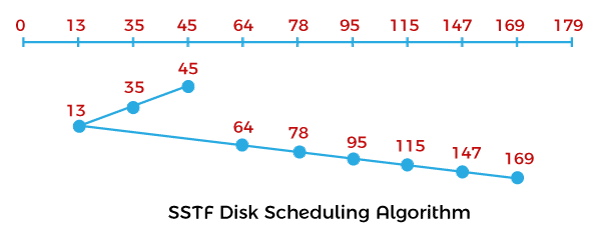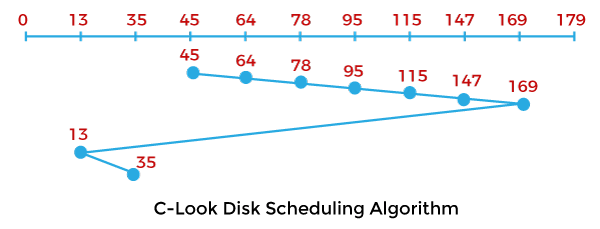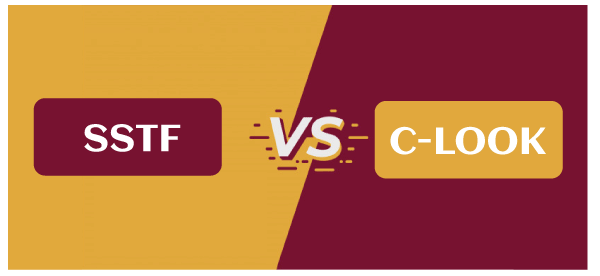Difference Between SSTF and C-LOOK Disk Scheduling AlgorithmIn this article, you will learn the difference between the SSTF and C-LOOK disk scheduling algorithm. But before discussing the differences, you need to know about the SSTF and C-LOOK disk scheduling algorithm. What is SSTF Disk Scheduling Algorithm?SSTF stands for Shortest Seek Time First, and it serves the request that is closest to the current position of the head. The direction of the head pointer is quite important in this algorithm. When a tie happens between requests, the head will serve the request in its current direction. In comparison to the FCFS, the SSTF algorithm is very efficient in terms of the total seek time. Example: Let's take an example to understand the SSTF Disk Scheduling Algorithm. Let's take a disk with 180 tracks (0-179) and the disk queue having input/output requests in the following order: 78, 64, 35, 169, 95, 147, 13, 115. The initial head position of the Read/Write head is 45 and will move in the left-hand side direction. Find the total number of track movements of the Read/Write head using the SSTF algorithm. Solution: 
Total head movements, Initial head point is 45, = (45-35) + (35-13) + (64-13) + (78-64) + (95-78) + (115-95) + (147-115) + (169-147) = 10 + 22 + 41 + 14 + 17 + 20 + 32 + 22 = 178 Advantages and Disadvantages of SSTF Disk Scheduling AlgorithmThere are various advantages and disadvantages of SSTF Disk Scheduling Algorithm. These advantages and disadvantages are as follows: Advantages
Disadvantages
C-LOOK Disk Scheduling AlgorithmIt is a combination of the LOOK and SCAN disk scheduling algorithms. In this disk scheduling algorithm, the head begins from the initial request to the last request in the other direction and serves all requests in between. The head jumps in the other direction after finishing the last request at one end and proceeds towards the remaining requests, completing them in the same direction as previously. Unlike LOOK, it only responds to requests in one direction. Example: Let's take an example to understand the C-LOOK Disk Scheduling Algorithm. Let's take a disk with 180 tracks (0-179) and the disk queue having input/output requests in the following order: 78, 64, 35, 169, 95, 147, 13, 115. The initial head position of the Read/Write head is 45 and would move on the right-hand side. Find the total number of track movements of the Read/Write head using the C-LOOK disk scheduling algorithm. Solution: 
Total head movements, The initial head point is 45, = (64-45) + (78-64) + (95-78) + (115-95) + (147-115) + (169-147) + (169-13) + (35-13) = 19 + 14 + 17 + 20 + 32 + 22 + 156 + 22 = 302 Advantages and Disadvantages of C-LOOK Disk Scheduling AlgorithmThere are various advantages and disadvantages of the C-LOOK Disk Scheduling Algorithm. These advantages and disadvantages are as follows: Advantages
Disadvantages
Main Differences between the SSTF and C-LOOK Disk Scheduling Algorithm
Here, you will learn the main differences between the SSTF and C-LOOK Disk Scheduling Algorithm. Various differences between the SSTF and C-LOOK Disk Scheduling Algorithm are as follows:
Head-to-head Comparison between the SSTF and C-LOOK Disk Scheduling AlgorithmHere, you will learn the head-to-head comparison between the SSTF and C-LOOK Disk Scheduling Algorithm. The main differences between the SSTF and C-LOOK Disk Scheduling Algorithm are as follows:
|
 For Videos Join Our Youtube Channel: Join Now
For Videos Join Our Youtube Channel: Join Now
Feedback
- Send your Feedback to [email protected]
Help Others, Please Share










